More pictures from my Spanish trip. Click the link below to see:
Our second day in Spain, we visited the city of Toledo. Toledo has been a settlement since Roman times, and it’s still built on the ancient plan: a warren of winding streets and alleyways, some so narrow that cars can’t even fit through. The city itself is built on a hilltop, surrounded by walls and a river, a reminder of the time when most major cities were fortified.
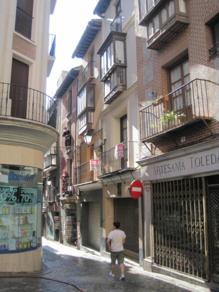 |
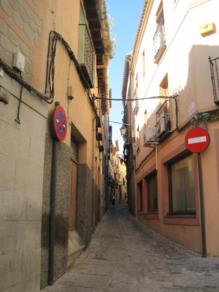 |
The architectural crown jewel of Toledo is the cathedral, which has been standing since the early 1200s and which – so the locals say – is built on the site of an even earlier Christian temple dating back to the year 587. We didn’t get to enter, since it’s closed to visitors while services are going on inside, but even from outside its architecture was striking. More, it’s become part of an ecosystem: An entire colony of birds has made the upper towers and spires of the cathedral their home, and there were hundreds of them wheeling and swooping in the canyons of air above the city.
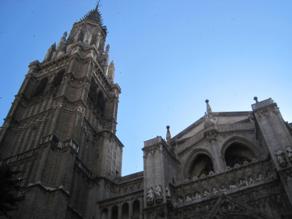 |
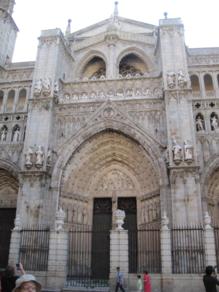 |
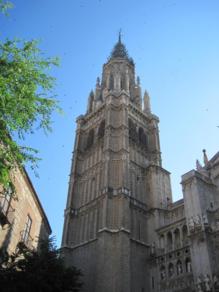 |
One of our other stops was the synagogue of Santa María la Blanca, one of the oldest synagogues in Europe. It was commissioned in the 1100s by Toledo’s Jewish population, but built by Moorish architects – hence the distinctively Islamic flourishes of intricate geometric tiling and carving, an architectural style called Mudéjar.
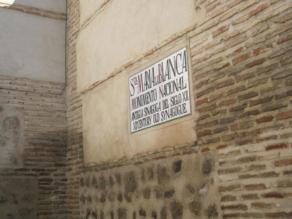 |
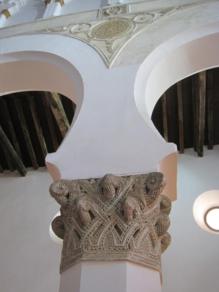 |
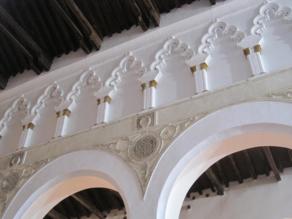 |
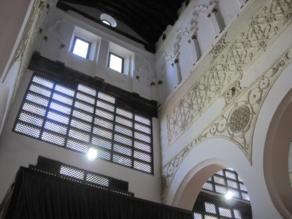 |
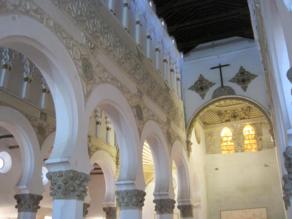 |
Toledo was once known as the “City of the Three Cultures“, where Christians, Muslims and Jews lived together in relative peace. Under the Moorish rulers, Christians and Jews were allowed to live unmolested and freely practice their own religion as long as they paid the jizya, a tax on non-Muslim citizens. In 1098 the Christians conquered Toledo, making it one of the first major cities to fall to the Reconquista, and official tolerance continued for several centuries more.
By the mid-1400s, however, the mood was turning ugly, and anti-Jewish riots and pogroms were breaking out in the city and elsewhere. Even those who converted to Christianity were persecuted, out of suspicion that they were still practicing Judaism in secret (which in some cases was true). Finally, in 1492, Catholic anti-Semitism came to a head when Ferdinand and Isabella issued the Alhambra Decree, expelling all Jews from Spain.
Forbidden to take money or valuables, the Jews of Toledo left with nothing but the keys to their houses, hoping that someday they’d be able to return and live in them again. According to our tour guide, if you meet a Jewish person with the surname “Toledano”, you’ll know that they’re descended from those long-ago exiles. The synagogue is now a museum devoted to Jewish history, displaying artwork that memorializes the persecution of the past. (The Alhambra Decree was officially revoked in 1968, but most of the exiles’ descendants never returned, and even today, Toledo’s Jewish population is negligible.)
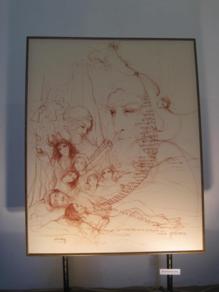 |
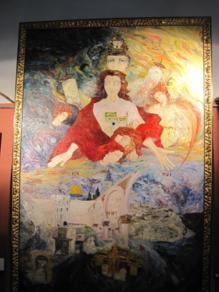 |
Finally, on our way out, we stopped at a vantage point in the surrounding hills from which you can see the entire city at once. I took a slew of pictures and stitched them together into a panorama:
Next: The Great Mosque of Cordoba.
